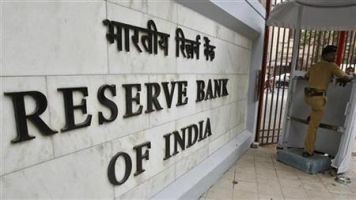RBI keeps repo rate unchanged at 7.25%; CRR unchanged

MUMBAI: Reserve Bank of India Governor Raghuram Rajan kept interest rates unchanged as expected but raised hopes of a reduction before the end of the year if the monsoon maintains its “near normal” progress thus far to keep farm product prices in check and a global supply glut prevents oil prices from climbing.
Rajan reintroduced the phrase “accommodative stance of monetary policy” after having dropped it in the June review. The omission had unnerved the markets as it was interpreted as the end of the monetary policy’s downward cycle. The central bank’s Tuesday policy announcement suggests that consumers could look forward to lower payments on their home and car loans.
The governor’s indication of easier interest rates comes despite the central bank’s inflation projection for January remaining at 6%, though this is lower by 20 basis points for the January-March quarter than before due to lower crude oil prices. A basis point is 0.01 percentage point.
Enough caution is also being factored into expectations given that prices of non-food and fuel items have been climbing and that inflation expectations of consumers have also risen in the recent past. But the central bank believes the situation tilts toward prices softening rather than rising.
“Several factors… could have a significant mitigating influence,” said Governor Rajan. “These include the sharp fall in crude prices since June and the likelihood of this softness persisting in view of the global supply glut and expanding production by Iran; the welcome increase in planting of pulses and oilseeds and prospects of rainfall in August and September; the effects of the government’s current proactive supply management to contain shocks to food prices, especially of vegetables, alongside its decision to keep increases in minimum support prices moderate.”
The RBI kept the repo rate, at which it lends to banks, at 7.25%. All other rates, the statutory liquidity ratio (SLR) and the cash reserve ratio (CRR) remain unchanged. SLR relates to the proportion of money that banks need to invest in government bonds, while CRR is the amount they need to keep with the central bank. “He has kept the room open (for rate cuts),” said A Prasanna, economist at ICICI Securities Primary Dealership Ltd. “His commentary has been a bit more softer than the one in June. It all boils down to data. If the data moves, then the commentary moves.”
Although economic growth indicators have been muted, Rajan said that prospects could improve given sufficient rains leading to higher rural consumption and the fall in commodity prices boosting consumption.
“The outlook for growth is improving gradually,” said Rajan. “Favourable real income effects could accrue from weaker commodity prices, in particular crude oil, and a possible step-up in agricultural activity if monsoon conditions continue to improve.”